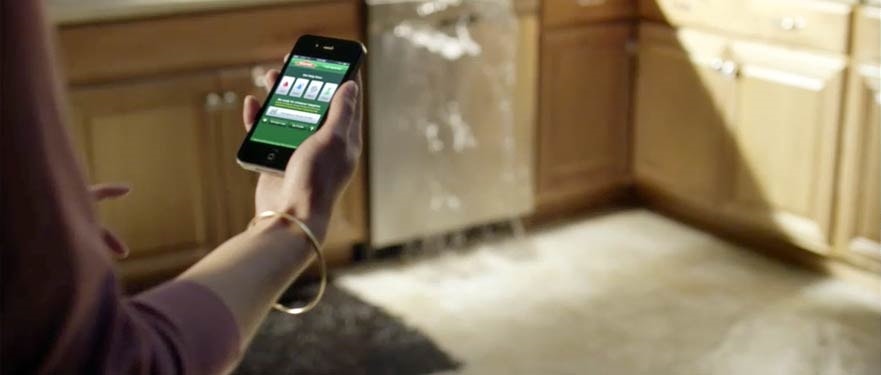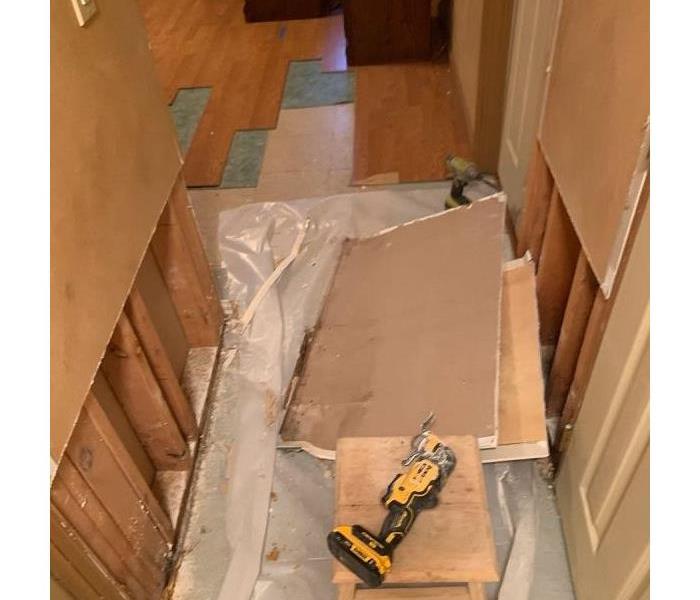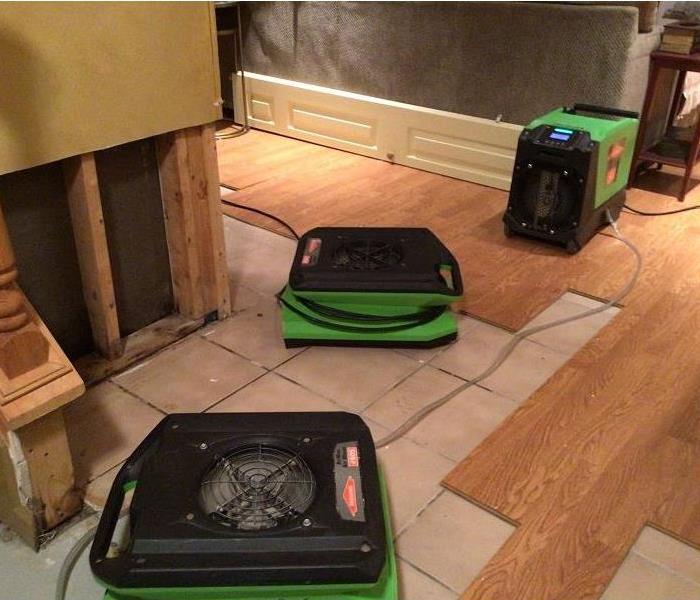
Water Damage Emergency Tips
What you can do until help arrives
Water Tips | Fire Tips | Biohazard Tips | Mold Tips
What is ice damming?
What is an ice dam? Ice dams form when heated air melts roof snow downward behind still frozen ice. When water that is trapped cannot flow or run through the gutter system, it can back flow under roof shingles and into your home.
When will ice dams occur?
- The right weather conditions is usually when outside air temperatures are in the low 20s (F) for several days with several inches of snow on the roof.
- If you have poor attic insulation, your chances drastically increase.
How do I prevent ice dams?
- Keep attic air temperature below freezing when outside air temperature is in the low 20s.
- Lay more insulation down on the attic floor to prevent the warm household air from penetrating.
- Provide good attic ventilation to replace warm air in the attic with cold outside air.
- Keep the bottom four feet of the roof clear of snow. Be careful not to damage the shingles.
What NOT to do!
- DO NOT attempt to “chip away” the ice of an ice dam. It will likely lead to shingle damage
- DO NOT install mechanical equipment or water heaters in attics, especially in cold climates.
- DO NOT use salt or calcium chloride to melt snow on a roof. These chemicals are very corrosive and can shorten the life of metal gutters, downspouts and flashing. Runoff that contains high concentrations of these chemicals can damage nearby grass and plants.
Ice Damming questions? Call us at 845-255-4334.
Have A Water Damage Emergency? Call (845) 255-4334
What To Do After Flooding
- Remove excess water by mopping and blotting.
- Wipe excess water from wood furniture after removal of lamps and tabletop items.
- Remove and prop wet upholstery and cushions.
- Place aluminum foil or wood blocks between furniture legs and wet carpeting.
- Turn air conditioning on for maximum drying in summer.
- Remove colored rugs from wet carpeting.
- Remove art objects to a safe, dry place.
- Gather loose items from floors.
What NOT To Do After Flooding
- Don't leave wet fabrics in place. Hang furs and leather goods.
- Don't leave books, magazines or other colored items on wet carpet or floors.
- Don't use your household vacuum to remove water.
- Don't use television or other household appliances.
- Don't turn on ceiling fixtures if ceiling is wet, and keep out of rooms where ceilings are sagging.





 24/7 Emergency Service
24/7 Emergency Service





